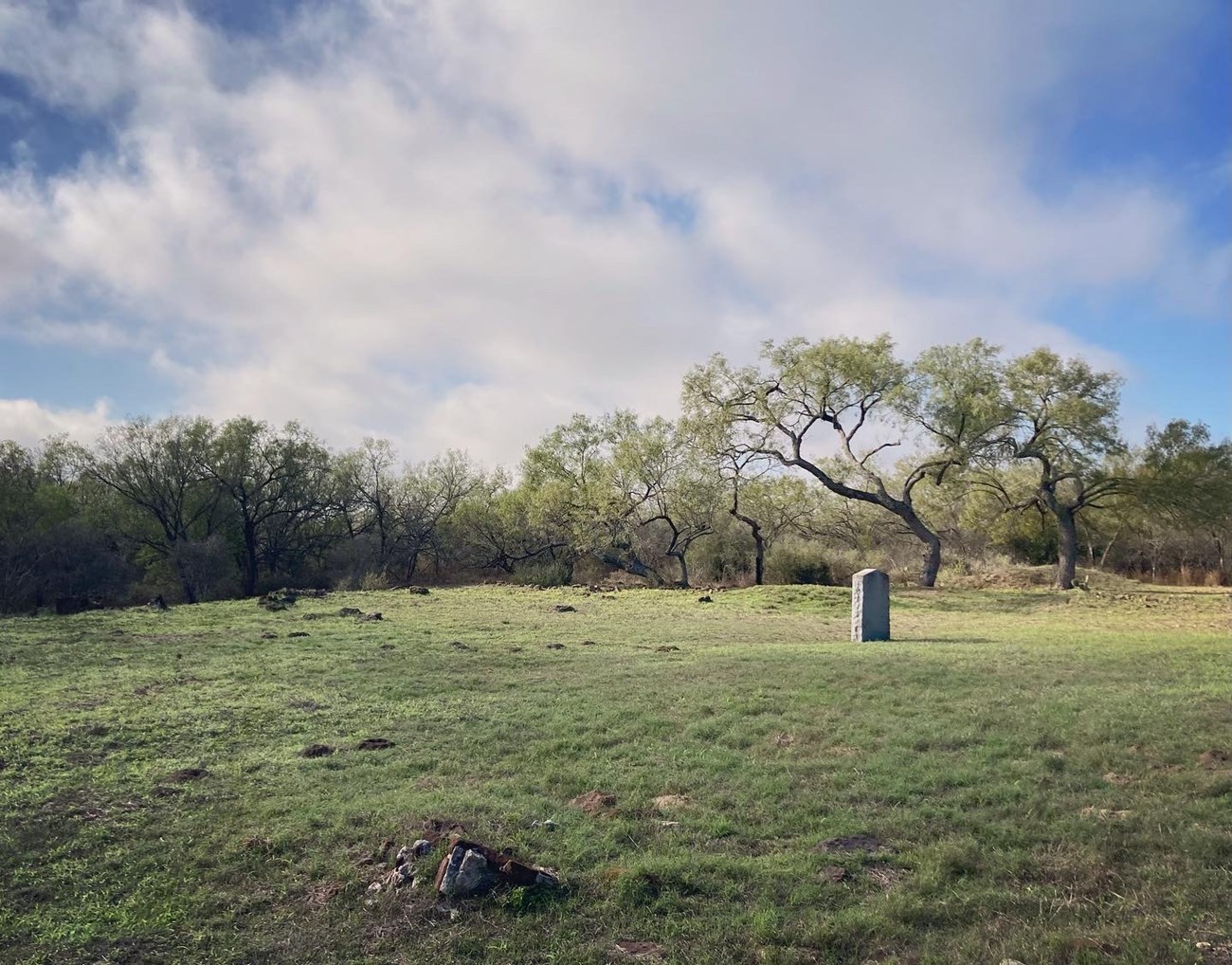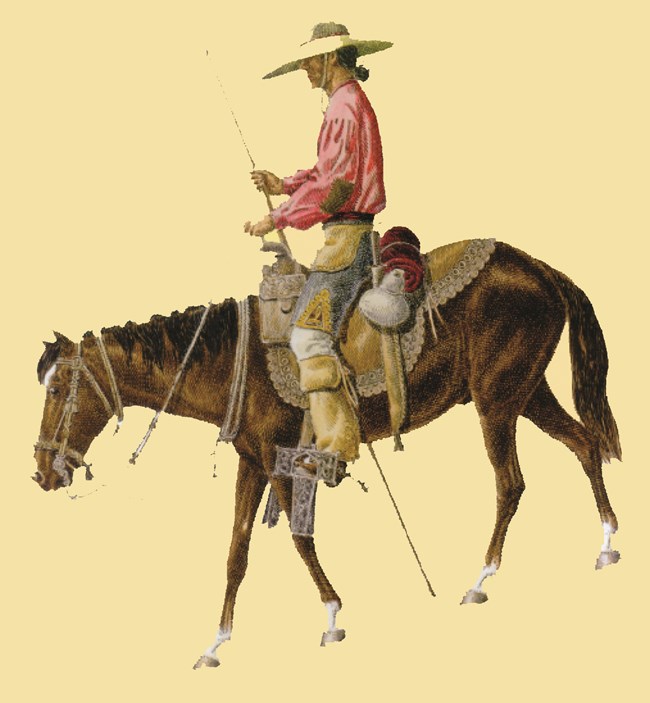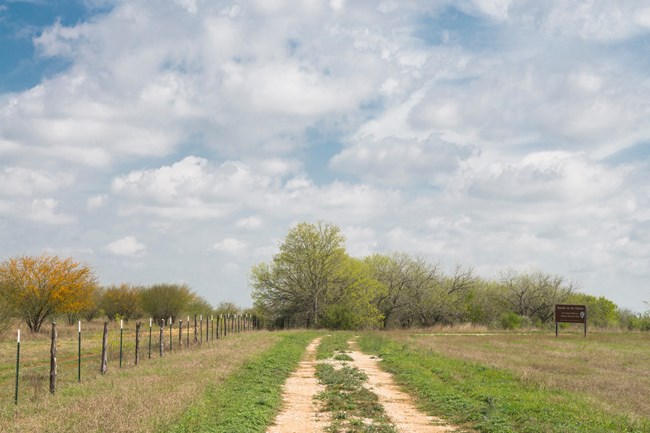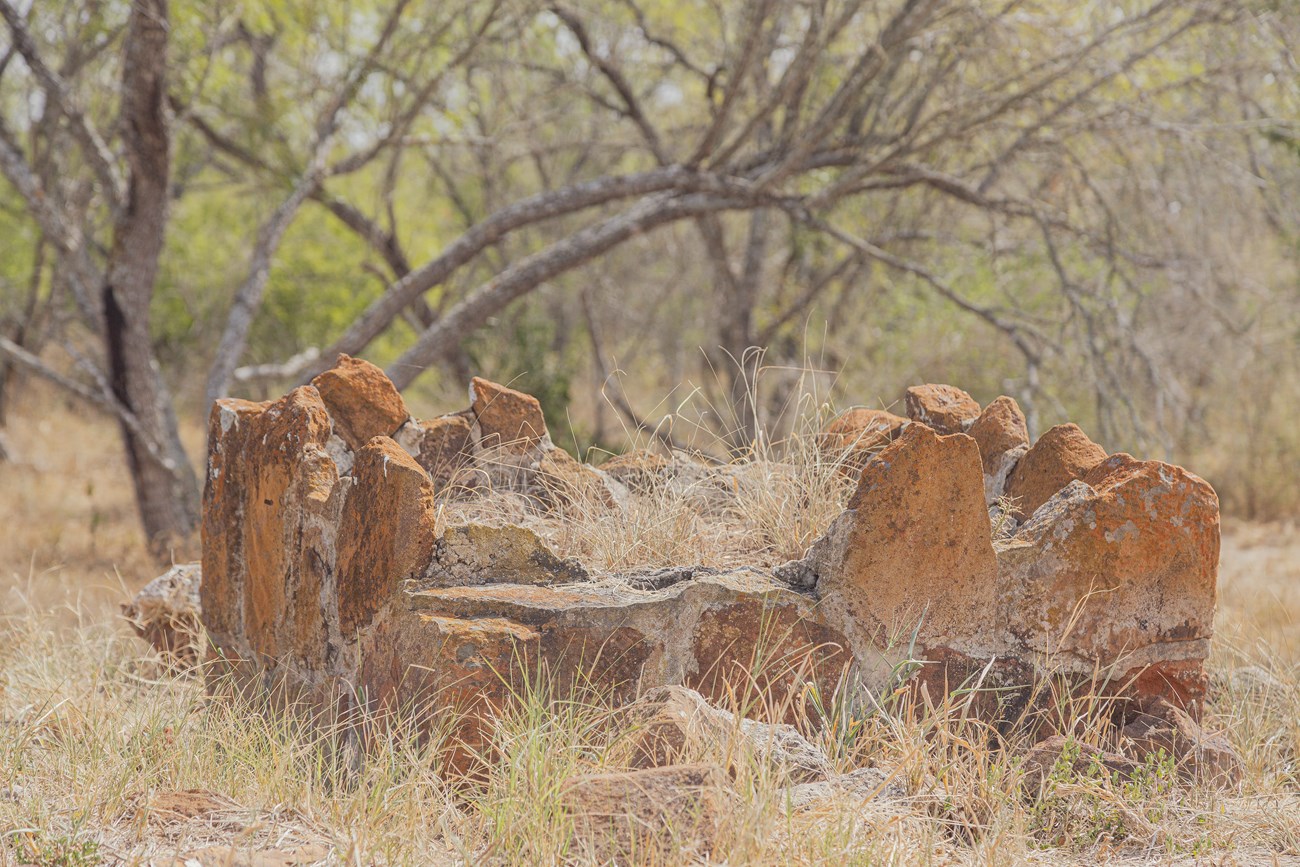Last updated: May 27, 2025
Article
Rancho de las Cabras

NPS Photo/Maggie Burkett
"There is also a ranch on which stands a stone house with all needed furniture for families who live there and take care of 1,262 head of cattle, 4,000 sheep, 145 saddle horses, and 11 droves of mares and 9 donkeys." 1762 report of Fr. Mariano Fransicso de los Dolores y Viana
Mission Espada and Its Ranch
Mission Espada is the southernmost mission of five Spanish colonial missions in San Antonio, Texas along the San Antonio River. Established in 1731, Mission Espada was one of three missions re-established on the San Antonio River from what is now East Texas. In addition to the land necessary for the mission's compound, each mission was granted land for farming and ranching. Espada's grazing lands became known as Rancho de las Cabras, the Goat Ranch. A ranch headquarters compound was built sometime after 1758 on the ranch land. These structures housed the Native Texan vaqueros and their families who maintained the herds. Rancho de las as Cabras, located about 26 miles from Mission Espada, provided livestock for the inhabitants of the mission. The vaqueros oversaw the rapidly increasing herds, allowing the missionaries to concentrate on his primary duty: that of educating and converting the native inhabitants.All of the mission ranches started to decline in the 1770s, various factors played into this to include when Apaches increased their presence in the area. All unbranded cattle became the property of the crown in 1778, and the vast herds were reduced to several hundred head. With mission secularization in the late 1700s and early 1800s, the ranchlands passed into the hands of former mission inhabitants and settlers.

Hohlaus, 1995

NPS Graphic
Feeding the Mission Families
In 1772, there were mission 172 inhabitants at Mission Espada. They used about six head of cattle per week, or 300 cattle a year for meat. The large mission herd at the ranch more than met this demand, and the mission often enjoyed a large surplus. Vaqueros traveled weekly from the ranch to the main mission complex to deliver livestock for the mission and also to replace goods they may need at the ranch for the week.Livestock Usage Changing Ways of Life in South Texas
Oxen did heavy plowing at the mission farmfields to grow new crops such as tomatoes, beans, squash, peppers, melons, corn, cotton, and more.Cattle, sheep, goats, and pigs provided new meat to the region. Beyond meat for meals, cattle produced hides for leather goods; tallow for lighting, soap, and lubrication; and horns for carving and other uses. Sheep provided wool, and goats produced milk.
Horses provided transportation and the means to herd the other livestock.
Mules and burros were riding and pack animals.

NPS Graphic
Lasting Vaquero Legacy
A century later (1800s), much of the Texas cattle industry was built on the legacy of these Spanish colonial mission ranches. The regulations which governed the industry, the techniques for handling herds from horseback, even the cattle themselves, had their origins in the mission era. Modern ranching inherited the equipment, vocabulary, and folklore of the Native American vaqueros.CHAPS: short for chaparejos or chapparreras. Leather leggings worn around pants to protect legs.
MUSTANG: from mesteno, originally meant wild Spanish cattle.
QUIRT: a variant of cuarta, horsewhip.
LARIAT: anglicized version of la reata, the woven rawhide rope.
JERKY: portable, dried meat originally called charqui.
LASSO: variant of the Spanish /azo.
RODEO: Spanish, originally meaning a cattle roundup.
BRONCO: wild horse
SERAPE: all-purpose poncho
SOMBRERO: symbol of the vaquero culture; modified by Anglos into ten-gallon hats and stetsons.
CORRAL: Spanish for enclosure.
QUIRT: a variant of cuarta, horsewhip.
LARIAT: anglicized version of la reata, the woven rawhide rope.
JERKY: portable, dried meat originally called charqui.
LASSO: variant of the Spanish /azo.
RODEO: Spanish, originally meaning a cattle roundup.
BRONCO: wild horse
SERAPE: all-purpose poncho
SOMBRERO: symbol of the vaquero culture; modified by Anglos into ten-gallon hats and stetsons.
CORRAL: Spanish for enclosure.

NPS Photo/JT Fineart
The Ranch Site
On September 15, 1995, the National Park Service acquired a small section of the former ranch lands from the Texas Parks and Wildlife Department. This tract, located at the junction of the ruins of Rancho de las Cabras' compound is now part of San Antonio Missions National Historical Park and San Antonio Missions World Heritage Site.Although the site is undeveloped, National Park Service Park Rangers lead tours through by reservation only. Weather may cause the cancellation of some tours.
Safety
Because the site contains brushy areas and fire ants and other possible concerns like ticks, it is recommended that boots and appropriate clothing be worn while visiting the ranch lands. A dirt road leads to the area which could cause difficulties for some low clearance vehicles. There are no restrooms or water available at the site.
NPS Photo/Andrew Shirey
